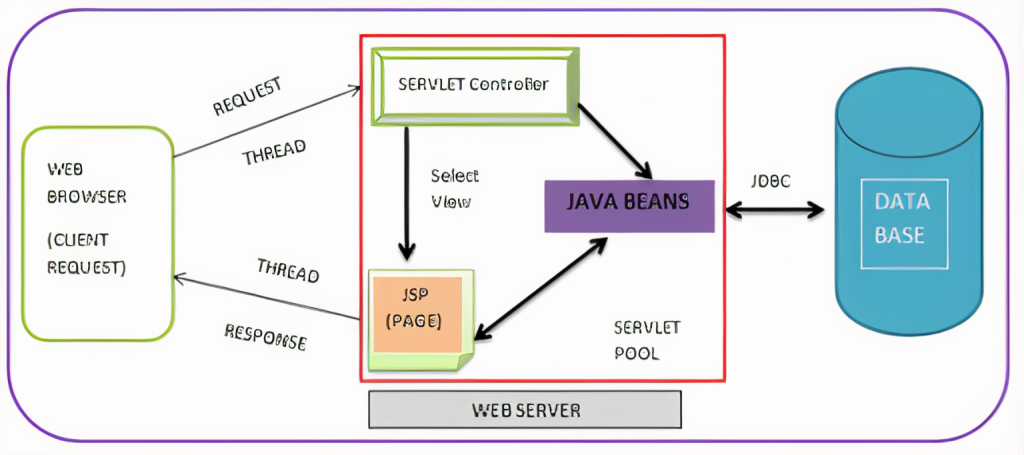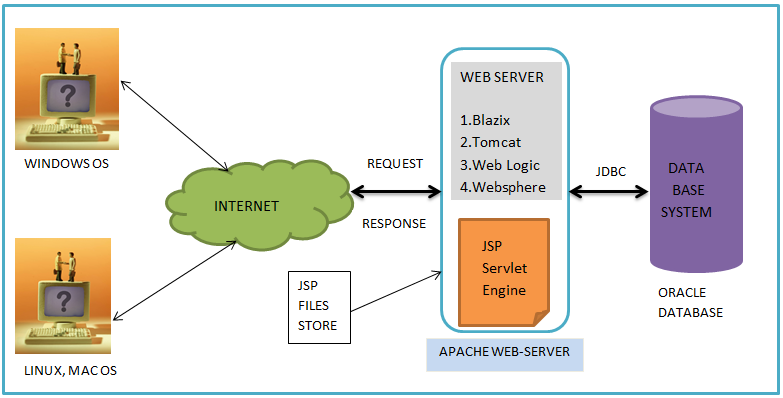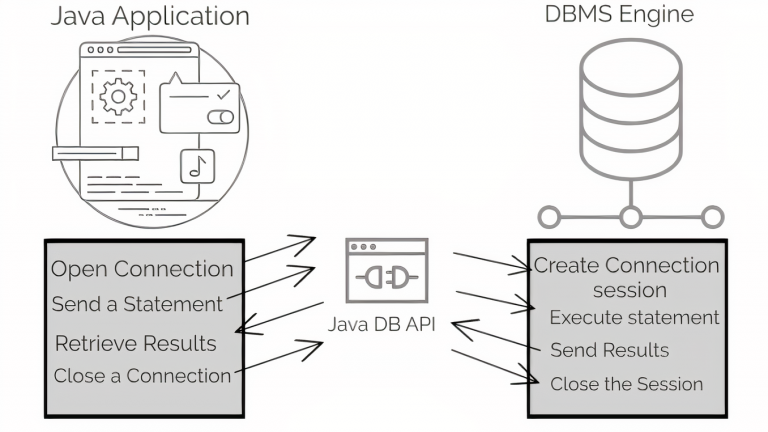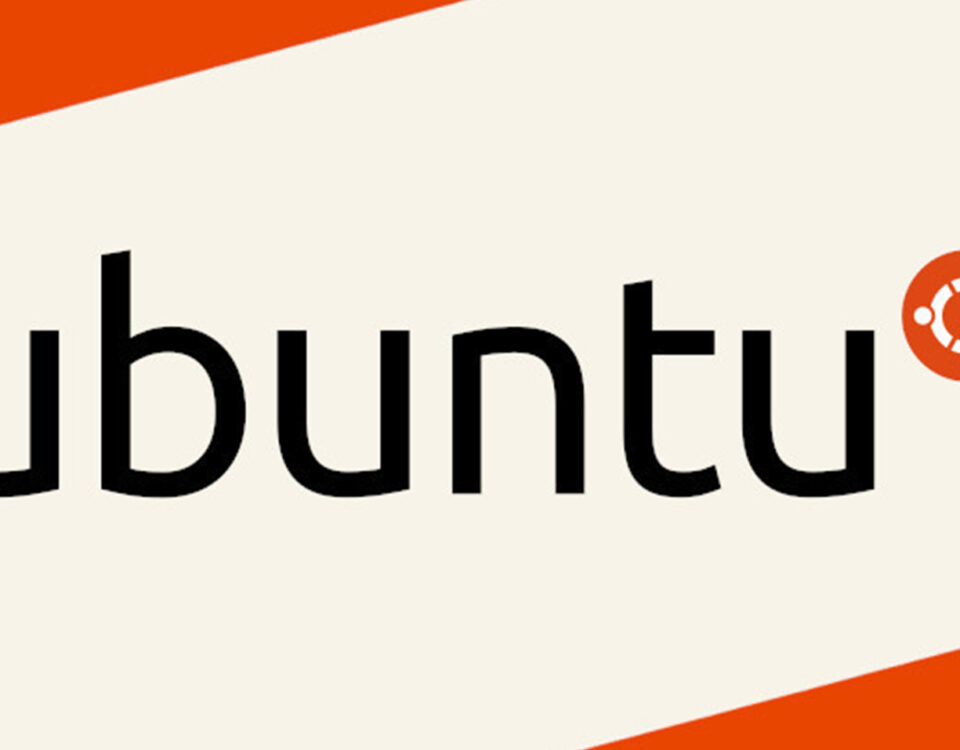7 Java Web Development Technologies You Must Know In 2021–22

Introduction to Amazon DynamoDB
18th August 2021
How To Find Best Professional IT Training Company
23rd August 2021Java technology needs no introduction. In fact, everyone around the world is still fascinated with Java’s incredible potential in web and mobile application development. Surely, you too would be tempted by Java’s popularity and monopoly in software development and would want to leverage this programming language for your next web development solution.

Java enables you to secure complex application solutions like tally voting polls, flight booking APIs, hotel reservation systems, and much more. However, you wouldn’t be aware of which Java technologies you need to develop a complex or simple web application?
Actually, there is a wide range of technologies that lie under the shade of the name Java that describe web development in different senses. In this article, we will glean insights about Java technologies you can leverage to build a web application.
Whether you are a full-stack coder or a business owner, knowing about these technologies is critical to comprehend your application flow.
Comprehending Java Web Development
What resonates with Java web development? The term is defined as the process of website development using java technologies. The science of web development can be understood clearly with Java. However, before that, you need to comprehend the web application concept.
Actually, web applications are distributed application programs that can run on multiple computers and establish a communication medium through a network or server. Moreover, these applications only run on a web browser and are known for the ease they provide in using the browser as a user client.

When you create a web application, you don’t have to install or deploy the software application to different computers or computers of your clients. Moreover, enterprises can also update and maintain a web application without facing any hassle in updating and maintaining the application solution.
Moreover, you can also use these web applications for online retail sales, webmail, web blogs, online banking, discussion boards, and more. Altogether, millions of users can access a web application at a single time, which makes it widely popular. Owing to this, Java development services are preferred by enterprises.
For creating a web application in Java, you would have to use the Java EE platform. Moreover, there are many other platforms and standard editions, including classes and packages, that make web development easier. In order to create a web application, the technologies you are using must work on the server.
Moreover, the server must include a container or web server installed that can recognize and run the classes you create. Now Let’s take a glance at the Java technologies tools that you can use for creating web applications.
Altogether, you need to ensure that these technologies must be installed in your system to run Java on your system.
Java Technologies To Leverage In Web Application Development
There are several technologies that can be mentioned in the list. The major core java technologies that make the most out of java web development are Java Servlet, Java Server Pages, JDBC, and more. Sometimes you may be combining all of these technologies that may end up using each of them.
#1. Java Servlet
Java Servlet is the major technology that enables you to define HTTP-specific classes. In this, the servlet class extends the potential and capabilities of servers and hosts the application. This application can be accessed by a request-response programming model.
Though servlet has the potential to respond to any type of request, in fact, the major purpose of using servlet is that they can extend applications hosted via web servers. For example, you can leverage the potential of servlet to get data input from an online application or and extend it to appear on-screen or on an HTML page.

Moreover, you can use a servlet to write the data to the database or file. Majorly, the servlet runs on the server-side in the complete absence of application GUI or HTML.
#2. Java Server Pages
Java Server Pages (JSP) is quite popular among developers, and it offers a simplified and swift way to develop dynamic web content. It leads to the rapid development of web applications that are platform and server independent.
Moreover, you can also add snippets of servlet code into the text document of the application, which makes JSP developer-friendly. Moreover, JSP pages are significantly text-based documents that include two types of text:
- Static data that you can get expressed in any text format, including XML, HTML, or WML.
- JSP technology completely defines the construction of dynamic content on the web page.
Moreover, the packages that work in the creation of JSP pages are javax.servlet.jsp, javax.el, javax.servlet.jsp.tagexta, and javax.servlet.jsp.el. However, you would need to import them directly. With JSP, it can be extremely easy to create a web application in the presence of snipped JSP code and extensions.

You can develop a website with JSP technology pages by leveraging one snippet of code and include it in header.html file that defines site navigation. This way, to make changes in buttons or links, you just need to make changes in one file, and it will automatically be rendered everywhere on site.
#3. JavaServer Faces Technology
It is a UI framework that allows you to create web applications. GUI component framework is the sole component of JavaServer Faces technology that renders the components in various formats, including markup language and other technologies.
It also has RenderKit for creating HTML markup. The Java APIs and XML configuration files enable it to achieve this functionality. Moreover, its drag-and-drop GUI tools in Sun Java Studio Creator IDE help in using technology without writing or comprehending underlying component codes.
#4. JDBC API
The usage of JDBC API is quite popular, and most of the developers understand how critical JDBC is in web application development, and it enables you to invoke database SQL commands within Java programs.
Moreover, there is no special restriction involved as you can invoke JDBC Api in servlet, JSP pages, or enterprise bean. Majorly, JDBC is made of two parts, one application-level interface and another service provider interface.

Application-level interface is used to access a database through application components, and the server provider integrates a JDBC driver to the Java enterprise platform.
#5. Java Message Service API
You already know the significance of messaging, whether it is between humans or software components, or applications. Every software program, the messaging system is a peer-to-peer facility. Succinctly, a messaging client sends a message to the receiver client, and vice versa.
In this system, each client connects to a messaging agent that facilitates the creation, sending, receiving, and reading of a message. Java messaging service API is the facility in Java technology that solves the problem of communication between components and serves the purpose.
Enterprise messaging offers a flexible, reliable medium for the exchange of data throughout an enterprise. JMS API extends the functionalities to the provider framework to render the development of portable messaging applications in Java language.
#6. Java API for XML Processing
XML processing is a significant process in Java web development, and Java API for XML processing supports it using Document Object Model. DOM is the simple API for XML and XSLT (Extensible Stylesheet Language Transformation). It provides application parsing and transforms XML documents independent of particular XML-processing implementations.
JAXP offers namespace support that enables your application to work with schemas that otherwise have naming conflicts. It is crafted in a way that turns out very flexible and allows you to use XML-compliant and XSL processors from your application.

#7. Java Naming and Directory Interface
As the name suggests itself, it provides naming and directory features, enabling applications to render multiple naming and directory services. Moreover, it offers applications with methods that can perform standard directory operations such as object search, attribute association, and more.
Moreover, JNDI can store and retrieve different types of java technology objects enabling the application to coexist with a variety of legacy applications and systems. Using JNDI, a naming environment, you can access a number of other services such as naming services, enterprise bean, and web components.





